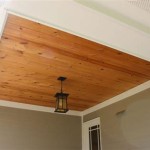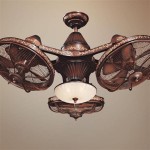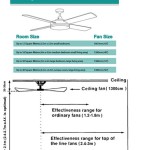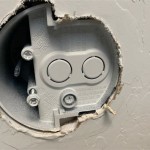Paint For Ceiling: A Guide To Ensuring Professional Finished Goods
Achieving a professional-looking ceiling paint job requires more than simply applying paint. It involves careful planning, selecting the right materials, and executing proper techniques. This guide aims to provide comprehensive information on each of these aspects, ensuring a high-quality, durable, and aesthetically pleasing finish.
The appearance of a ceiling significantly impacts the overall ambiance of a room. A well-painted ceiling can brighten a space, create a sense of height, and complement the existing décor. Conversely, a poorly painted ceiling can detract from the room's appeal, exhibiting imperfections such as uneven coverage, drips, and roller marks. Therefore, understanding the nuances of ceiling painting is essential for both homeowners and professional painters alike.
Understanding Ceiling Paint Types and Properties
The first step in achieving a professional ceiling finish is selecting the appropriate type of paint. Ceiling paints are formulated with specific properties that distinguish them from wall paints. These properties primarily address the unique challenges presented by painting overhead surfaces.
One critical property is its viscosity. Ceiling paint is typically thicker than wall paint. This increased viscosity helps to minimize dripping and splattering during application, a significant advantage when working overhead. The thicker consistency also aids in hiding minor imperfections on the ceiling surface.
Another key characteristic is its formulation to reduce roller spatter. Special polymers and additives are incorporated into ceiling paints to minimize the amount of paint that flies off the roller during application. This not only reduces mess but also contributes to a more even finish.
Most ceiling paints are available in a flat or matte sheen. This is intentional, as a flat sheen minimizes light reflection, effectively concealing imperfections such as dents, cracks, and uneven textures. While higher sheens like eggshell or satin are sometimes used on walls for their durability and washability, they are generally not recommended for ceilings due to their tendency to highlight flaws.
Many ceiling paints are also formulated with stain-blocking properties. This is particularly important in areas prone to moisture, such as bathrooms and kitchens, where stains from water leaks or cooking fumes are common. Stain-blocking paints prevent these stains from bleeding through the new coat of paint, ensuring a clean and uniform appearance.
Primer is a crucial component in achieving a professional finish, particularly on new or previously unpainted ceilings. Primer serves several important functions: it seals the surface, creating a uniform base for the paint; it improves adhesion, preventing the paint from peeling or flaking; and it helps to block stains and tannins from bleeding through the paint. In most cases, using a primer specifically designed for ceilings is recommended before applying the topcoat.
Preparing the Ceiling Surface for Painting
Proper surface preparation is paramount to achieving a smooth and long-lasting paint job. Neglecting this step can lead to a host of problems, including poor adhesion, uneven coverage, and premature peeling. A thorough cleaning and repair process will ensure that the paint adheres properly and provides a uniform, aesthetically pleasing finish.
The first step in preparing the ceiling is to thoroughly clean the surface. Remove any dust, dirt, cobwebs, or other debris using a vacuum cleaner with a brush attachment or a damp cloth. In areas with grease or heavy grime, use a mild detergent solution to clean the surface, followed by a clean water rinse. Allow the ceiling to dry completely before proceeding.
Inspect the ceiling for any imperfections, such as cracks, holes, or water stains. Repair any cracks or holes with patching compound, applying it with a putty knife and smoothing it out to create a seamless surface. Allow the patching compound to dry completely according to the manufacturer's instructions, and then sand it smooth with fine-grit sandpaper. Remove any sanding dust with a damp cloth before priming.
Address any water stains or other discoloration by applying a stain-blocking primer. This will prevent the stains from bleeding through the paint and ensure a uniform finish. Apply the primer evenly, following the manufacturer's instructions, and allow it to dry completely before proceeding.
Protect the surrounding areas by covering the floors with drop cloths and taping off the walls and trim with painter's tape. This will prevent paint from splattering on these surfaces and make cleanup easier. Ensure that the painter's tape is applied firmly and smoothly to create a crisp, clean line.
Ensure proper ventilation in the room while painting. Open windows and doors to allow fresh air to circulate. If necessary, use a fan to improve ventilation. This will help to reduce the concentration of paint fumes and create a more comfortable working environment.
Techniques for Applying Ceiling Paint
The method of paint application significantly impacts the final result. Utilizing proper techniques, including brushwork and rolling, ensures a smooth, even coat for a professional ceiling finish.
Begin by "cutting in" along the edges of the ceiling with a paintbrush. This involves painting a narrow strip along the perimeter of the ceiling where it meets the walls, trim, or other surfaces. Use a high-quality angled brush for this purpose, ensuring a clean and precise line. Dipping the brush sparingly into the paint and applying even pressure, avoiding drips and runs is crucial. This step creates a defined border and makes it easier to roll the paint onto the rest of the ceiling without getting paint on the surrounding surfaces.
Once the edges have been cut in, use a roller to apply the paint to the main portion of the ceiling. Use a roller with a nap appropriate for the ceiling's texture. A smoother ceiling requires a shorter nap, while a textured ceiling requires a longer nap. Load the roller evenly with paint, avoiding over saturation, which can lead to drips and splatters. Apply the paint in a consistent, overlapping pattern, working in small sections at a time. Maintaining a "wet edge," where each section of paint overlaps the previous one, ensures a seamless finish without visible roller marks.
Apply at least two coats of paint to the ceiling, allowing each coat to dry completely before applying the next. This will ensure adequate coverage and a uniform color. Apply the second coat in the opposite direction from the first coat to further minimize roller marks and ensure even coverage. It's important to follow the manufacturer's drying time recommendations before applying subsequent coats.
Inspect the ceiling carefully after each coat of paint has dried. Look for any missed spots, drips, or other imperfections. Touch up any areas as needed with a brush or roller. Pay particular attention to areas around light fixtures and other ceiling features, where imperfections can be more noticeable.
Remove the painter's tape carefully while the paint is still slightly wet. This will prevent the paint from peeling off with the tape and ensure a clean, crisp line. Pull the tape away from the painted surface at a 45-degree angle, using a sharp utility knife to score the edge of the paint if necessary. This will prevent the paint from chipping and create a professional-looking finish.
Clean up any spills or splatters immediately with a damp cloth. Allow the paint to dry completely before replacing any furniture or other items in the room. Properly dispose of any leftover paint and painting supplies according to local regulations. This includes cleaning brushes and rollers thoroughly and storing them properly for future use.
By understanding the different types of ceiling paint available, thoroughly preparing the ceiling surface, and using proper painting techniques, a professional-looking ceiling finish can be achieved. While seemingly straightforward, each step contributes significantly to the final outcome, ensuring a durable, aesthetically pleasing, and long-lasting result.

Best Ceiling Paint Guide Forbes Home

Tips On How To Paint Ceilings Like A Pro Capital Painter

How To Paint A Ceiling Diy Guide

Complete Guide To Painting A Ceiling Best Tips Homeadvisor

Yescolours Blog How To Paint A Ceiling The Ultimate Guide

9 Rules For Painting Ceilings A Perfect Finish Paintenance Melbourne

How To Best Paint Ceilings Valspar

How To Paint A Ceiling Harris

How To Paint A Ceiling Harris

How Much Does It Cost To Paint A Ceiling 2024
Related Posts








